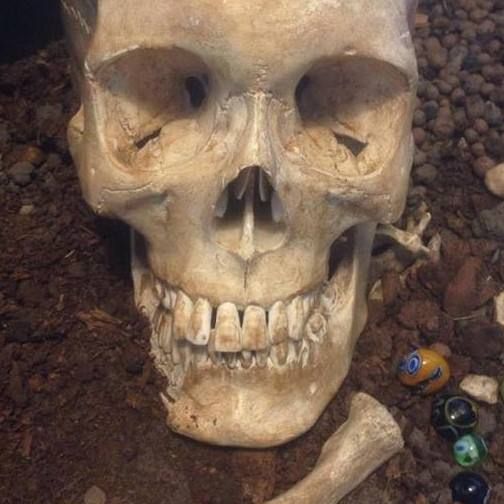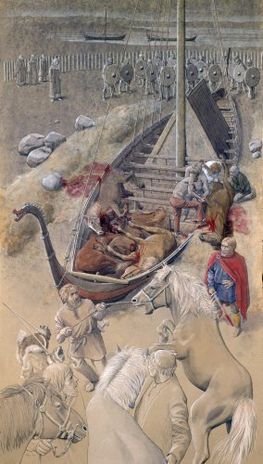
Dead and buried
Burial sites are one of the largest groups of archaeological sources for the Viking Age. Many of these graves also reveal evidence of religious practices, showing for example that gifts were given to the deceased for their life after death. Several magnificent graves are known from Viking times, including the Mammen grave at Viborg in Jutland and the famous ship burials at Oseberg and Gokstad in Norway. Ship burials have also been found to the west in Britain and Ireland, in areas where the Vikings settled.
- Find out more about the Vikings' burial practices before they became Christians. How did the Vikings bury their dead? What did the graves contain? Which religion and what beliefs lay behind the appearance of the grave, the grave goods, the relative arrangement of the contents etc. (see the texts from Scotland, Ireland and Orkney and from Lindholm Høje; perhaps you could find out something about the Oseberg ship on the Internet).
- What was put in the grave with the body? In a warrior's grave? In a woman's grave? A rich or a poor person?
- Why do we find both heathen and Christian symbols in the graves?
- Who was buried in a ship?
- In Scar on Orkney, a ship burial has been found containing the bodies of three people; write their biographies.
- Write a story about the three people. What happened to them and why are they buried here in this way?
Ladby
The artist's interpretation of the ship burial at Ladby. In the ship burial both horses and dogs were found. Read about Ladby here.
